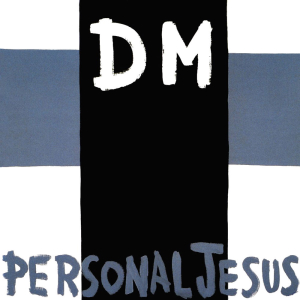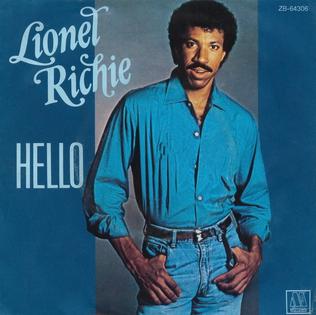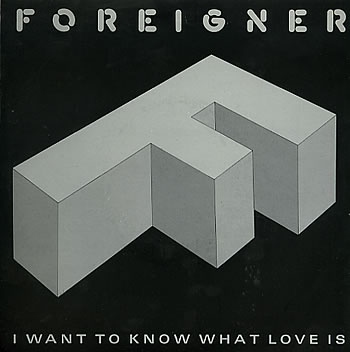 When Kool & The Gang released “Get Down On It” in 1981, they weren’t just offering another slice of funky pop for the radio—they were issuing a joyous command to the world. The title itself is more than a catchy phrase; it’s a call to action, a musical invitation to shed inhibitions and join the communal energy of the dance floor. Four decades later, the song remains an unstoppable force of rhythm and positivity, a track that can still ignite a party, fill a club, or bring a wedding reception to life. “Get Down On It” is one of those rare records that feels both of its time and timeless, perfectly capturing the early 1980s’ shift from disco to funk-driven pop while transcending trends with a groove so infectious it seems to live outside of any particular era.
When Kool & The Gang released “Get Down On It” in 1981, they weren’t just offering another slice of funky pop for the radio—they were issuing a joyous command to the world. The title itself is more than a catchy phrase; it’s a call to action, a musical invitation to shed inhibitions and join the communal energy of the dance floor. Four decades later, the song remains an unstoppable force of rhythm and positivity, a track that can still ignite a party, fill a club, or bring a wedding reception to life. “Get Down On It” is one of those rare records that feels both of its time and timeless, perfectly capturing the early 1980s’ shift from disco to funk-driven pop while transcending trends with a groove so infectious it seems to live outside of any particular era.
To understand the enduring magic of “Get Down On It,” you have to place it in the context of Kool & The Gang’s remarkable career. By the time the single hit airwaves, the band had already spent more than a decade evolving from a hard-charging jazz-funk outfit to one of the most successful crossover acts in pop music. Formed in Jersey City in the mid-1960s by brothers Robert “Kool” Bell and Ronald Bell, the group built its early reputation on tight musicianship and horn-driven funk. Throughout the 1970s, they scored hits like “Jungle Boogie,” “Hollywood Swinging,” and “Funky Stuff,” songs that blended raw funk with an infectious sense of fun. But as disco rose and fell, Kool & The Gang adapted, moving toward a smoother, more melodic sound without losing their core rhythmic identity. By the time vocalist James “J.T.” Taylor joined the band in 1979, they were ready to embrace a new era, one that emphasized sing-along hooks and danceable grooves designed for the emerging post-disco generation.
“Get Down On It,” from their 1981 album Something Special, arrived at precisely the right moment. Disco had suffered a backlash in the late 1970s, but audiences still craved music that made them move. Funk, with its emphasis on live instrumentation and rhythmic complexity, offered a natural progression. Kool & The Gang were perfectly positioned to deliver a sound that retained the celebratory spirit of disco while infusing it with a streetwise funk sensibility. From the opening moments of “Get Down On It,” with its crisp drumbeat, percolating bassline, and bright keyboard stabs, it’s clear that the band understood exactly what the early ’80s dance floor demanded: a groove that was tight enough to drive the party but loose enough to feel organic.
At the heart of the song is Robert “Kool” Bell’s bass line, a marvel of rhythmic economy. His playing doesn’t just support the beat—it is the beat, a rubbery, syncopated pulse that gives the track its irresistible forward momentum. Layered on top are the band’s trademark horn arrangements, sharp and punchy, adding bursts of color that keep the groove dynamic and unpredictable. The guitar work is equally essential, with choppy, percussive strums that lock in with the drums to create a lattice of interlocking rhythms. Meanwhile, the keyboards provide shimmering textures that give the song a bright, modern sheen, bridging the gap between funk’s earthy roots and the sleek pop sound of the 1980s.
And then there’s J.T. Taylor’s vocal performance, which transforms “Get Down On It” from a great groove into a full-fledged anthem. Taylor doesn’t merely sing the lyrics; he leads the party, coaxing the listener onto the dance floor with an irresistible combination of smoothness and urgency. “What you gonna do? Do you wanna get down?” he asks, his voice alternately teasing and commanding. The call-and-response structure of the chorus reinforces the communal spirit of the song, as if Taylor is speaking directly to each individual in the crowd. When he urges, “Get your back up off the wall,” it’s not just a lyric—it’s an instruction, a friendly challenge to abandon self-consciousness and surrender to the rhythm.
Lyrically, “Get Down On It” is deceptively simple, but its message carries a universal truth. At its core, the song is about participation, about overcoming hesitation and engaging fully with the moment. In the context of a nightclub or a house party, that means dancing. But on a deeper level, it can be read as a metaphor for life itself: don’t stand on the sidelines, don’t cling to the safety of the wall, get out there and experience the world. This dual meaning gives the song a timeless quality, allowing it to resonate with listeners of all ages and backgrounds. Whether you’re a teenager at your first school dance, a grown adult at a family wedding, or simply someone in need of a pick-me-up, the message is clear and uplifting—life is happening now, and it’s better when you join in.
The production of “Get Down On It” reflects Kool & The Gang’s mastery of studio craft. Produced by the band with Eumir Deodato, the Brazilian jazz-funk legend who had previously worked with artists like Aretha Franklin and Frank Sinatra, the track balances crisp, radio-friendly clarity with the raw energy of a live performance. Each instrument occupies its own space in the mix, allowing the intricate interplay of bass, drums, guitar, and horns to shine through. The result is a sound that feels both polished and spontaneous, capturing the excitement of a great live band while meeting the demands of early ’80s FM radio.
Upon its release, “Get Down On It” was an immediate success. The single reached No. 10 on the Billboard Hot 100 and climbed to No. 4 on the R&B chart, while also making waves internationally, hitting the Top 10 in the U.K. and other markets. Its upbeat energy and universal appeal made it a favorite not only in clubs but also at sporting events, school dances, and anywhere people gathered to celebrate. Over the years, the song has become a staple of pop culture, appearing in countless movies, television shows, and commercials. From romantic comedies to animated films, its instantly recognizable bassline and infectious chorus have ensured that new generations continue to discover its magic.
What’s remarkable about “Get Down On It” is its ability to transcend changing musical fashions. In the four decades since its release, popular music has undergone countless transformations—hip-hop, electronic dance music, indie rock, and more—but the song’s groove remains as fresh and compelling as ever. DJs still drop it in clubs to get the crowd moving. Wedding bands still count on it to fill dance floors. Its influence can be heard in the work of artists ranging from Bruno Mars, whose retro-funk hits like “Uptown Funk” carry the same sense of joyous propulsion, to Daft Punk, whose disco-funk revival on Random Access Memories echoes the precision and warmth of Kool & The Gang’s sound.
Part of the song’s endurance lies in the chemistry of the musicians who created it. Unlike many studio-assembled acts of the era, Kool & The Gang were a real band with years of experience playing together. That cohesion shines through in every note of “Get Down On It.” The groove is not just a collection of individual parts but a living, breathing organism, the product of musicians who know exactly how to lock into each other’s rhythms. This level of interplay is what gives the song its irresistible sense of movement and spontaneity, qualities that can’t be faked or programmed.
“Get Down On It” also represents a key moment in the broader cultural landscape of the early 1980s. The disco backlash of 1979 had left many dance-oriented artists scrambling to find a new direction. Kool & The Gang, rather than retreating or drastically reinventing themselves, doubled down on what they did best: crafting sophisticated, feel-good funk that appealed to a wide audience. In doing so, they helped pave the way for the dance-pop explosion of the decade, proving that live bands could still dominate the dance floor even in an age increasingly defined by synthesizers and drum machines. Their success demonstrated that funk and R&B could evolve without losing their soul, influencing everyone from Michael Jackson to Prince in the process.
Listening to “Get Down On It” today, it’s impossible not to feel the joy radiating from every beat. The song invites movement on both a physical and emotional level, offering a temporary escape from the stresses of daily life. Its message is as relevant as ever in a world where people often find themselves isolated or hesitant to engage. In the simple act of dancing—of getting your back up off the wall and joining the crowd—there’s a reminder of our shared humanity, of the connections that music can create.
For Kool & The Gang, “Get Down On It” was more than just another hit; it was a defining moment in a career filled with them. It showcased their ability to evolve with the times while staying true to their roots, blending tight musicianship with universal appeal. It also cemented their reputation as architects of joy, musicians whose greatest gift was their ability to bring people together in celebration. Even as trends have come and gone, the song’s combination of irresistible groove and uplifting message has kept it alive in clubs, on radio, and in the hearts of music lovers around the world.
There’s something almost magical about the way “Get Down On It” continues to unite people across generations. Grandparents who danced to it at roller rinks in the early ’80s can share it with their grandchildren today, and the reaction is often the same: smiles, laughter, and an almost involuntary urge to move. That’s the mark of a true classic, a song that transcends nostalgia to remain vibrant and alive. Whether you’re hearing it for the first time or the hundredth, those opening notes still carry the same thrilling promise.
Ultimately, “Get Down On It” endures because it captures something essential about the human experience. Life can be complicated and challenging, but sometimes all it takes to feel alive is a great beat, a crowded dance floor, and the courage to step into the groove. Kool & The Gang distilled that truth into a three-and-a-half-minute masterpiece, a track that continues to remind us of the power of music to break down barriers, lift spirits, and bring people together. As long as there are parties to throw and dance floors to fill, “Get Down On It” will be there, urging us all to join the celebration.


